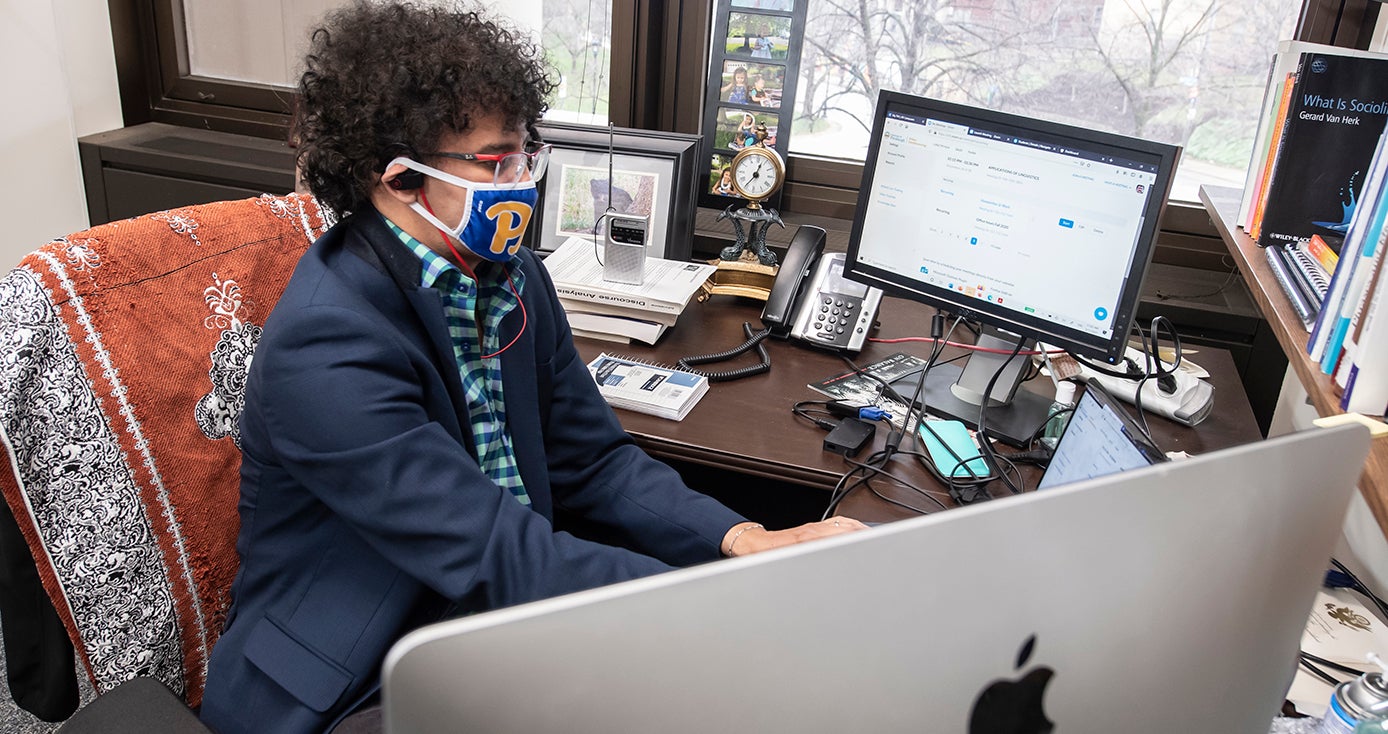
Subscribe to Pittwire Today
Get the most interesting and important stories from the University of Pittsburgh.Pathways Works Behind the Scenes to Enhance Advising
Recently, Abdesalam Soudi, a lecturer and internship and consulting advisor in the Department of Linguistics, was attempting to recruit for several different opportunities.
He turned to the University’s Pathways advising platform, which uses technology, best practice research and predictive analytics to help leverage data and manage advising and academic support services.
Soudi used the system to specify criteria, including academic terms and requirements for the roles; it took the platform all of a few seconds to generate a target list, and Soudi was able to recruit interns for all the opportunities within just three days.
“Pathways is not technology for the sake of technology,” said Soudi. “It is truly designed to improve student experience and support advisors and everyone else involved to meet the students where they are.”
Behind the scenes
Piloted in fall 2018 with incoming first-year classes in the School of Nursing and Swanson School of Engineering, Pathways is a coordinated effort led by faculty, staff and academic leadership to use the Education Advisory Board’s (EAB) Student Success Collaborative system with a predictive analytics platform from Othot.
“It's a way for advisors to see information about students that they couldn't necessarily see before to share notes with other advisors, to connect with other offices on campus and to more easily access data about students,” said Amanda Brodish, director of data analytics and pathways for student success. “In the past it was hard for advisors to get that information, but now they’re able to more easily within this platform.”
Brodish likens the functionality to a centralized health app that enables patients’ primary care physicians, specialized clinicians and other healthcare providers to easily share patients’ information across appointments—and thereby provide the highest level and quality of care.
“Behind the scenes there are really complex roles that people have within the platform that govern what they see, but the advisors can see almost everything,” said Brodish. The result is a streamlined experience for students.
The platform also integrates a robust system that can be used to refer students to other offices on campus. An advisor might, for example, refer a student concerned about the financial impact of dropping a course to the financial aid office.
Results so far have been positive, Brodish said: “We looked at retention for first year students to their second year and what we saw were some really encouraging numbers, including a five percentage point increase in first year to sophomore year retention on the Pittsburgh campus among students eligible for Pell grants.”
Platform consistency
Jill Harvey, director of first-year advising in the Swanson School of Engineering, has been using Pathways since its pilot launch.
“With a very simple series of clicks, I can make a student referral to financial aid or residence life, as well as other campus resources, and I can be confident that someone from one of those offices will reach out to the student to offer help,” Harvey said. “I appreciate that there’s a mechanism to make a connection to a helpful resource for a student, especially when I know they may not reach out on their own.”
She said the consistency of the platform helps especially in the Swanson School, where undergraduate students switch from a professional staff advisor to a faculty advisor after their first year. “I believe it creates a more seamless advising experience, which makes it easier for the new advisor to hit the ground running with a student, so to speak,” she said, also noting this is true for students transferring from one school or college to another at the University.
For Meredith Guthrie, lecturer and director of undergraduate studies in the Kenneth P. Dietrich School of Arts and Sciences’ Department of Communications, the best thing about Pathways is having an easy way to contact everyone students work with—and then follow up.
“I’ve been able to help students both when they are doing exceedingly well—by referring them to the Honors College—and when they struggle—by referring them to the Study Lab. In both cases, my students feel really taken care of,” she said.


